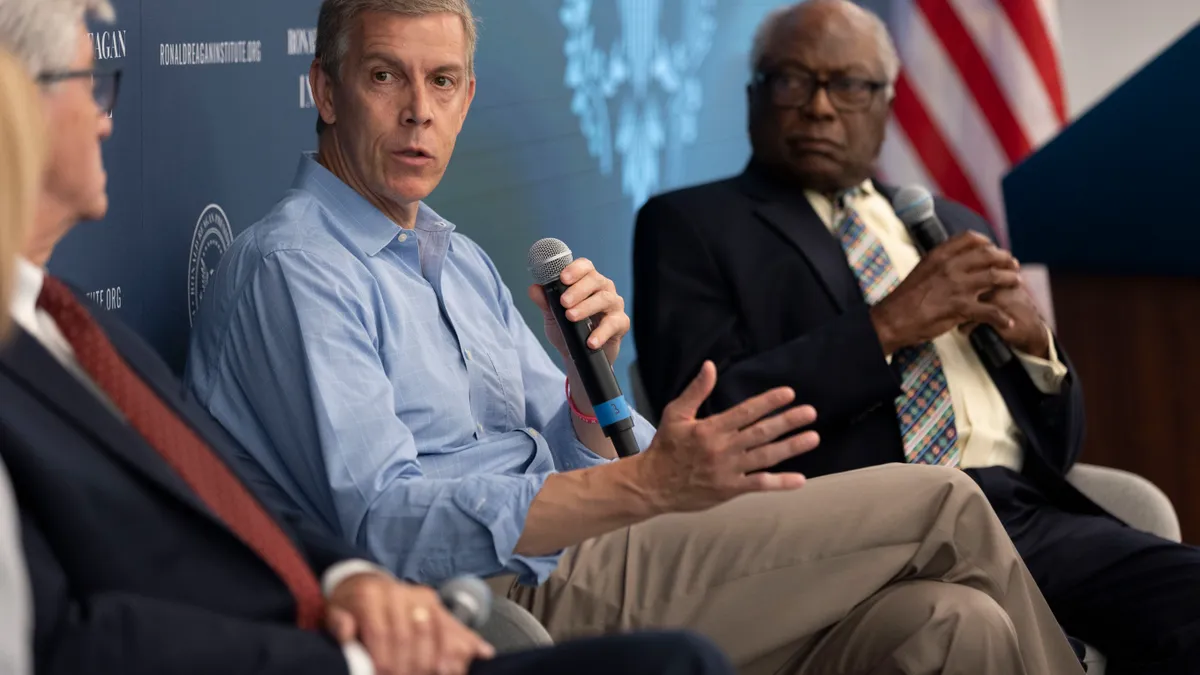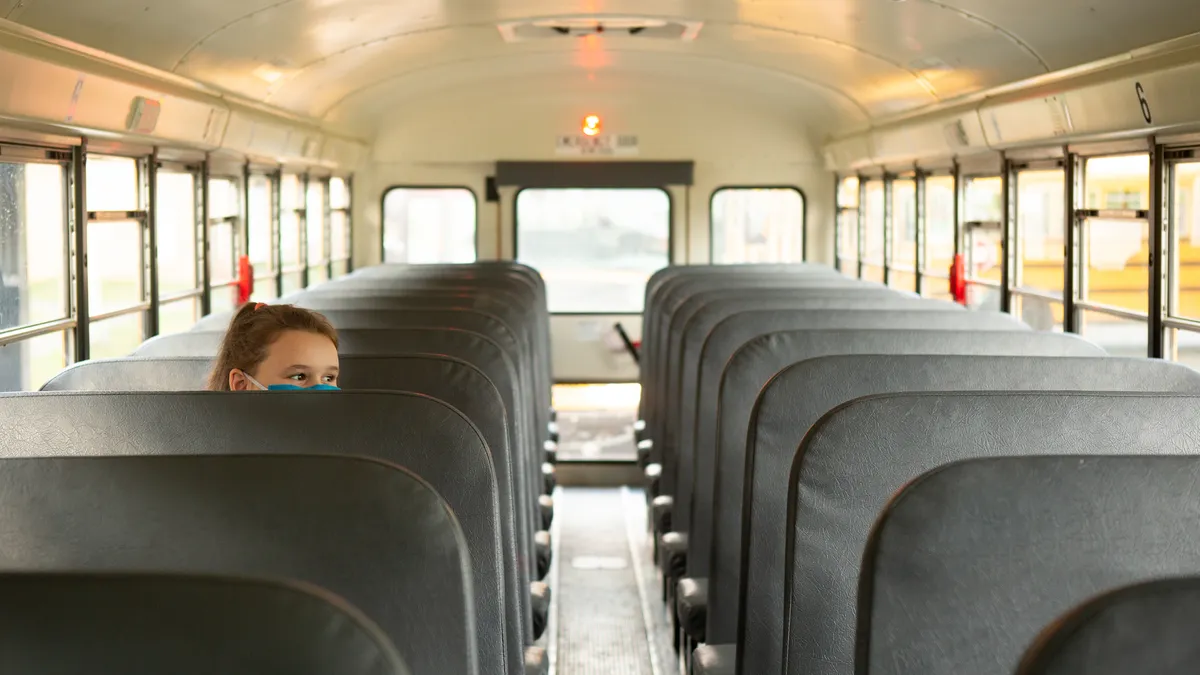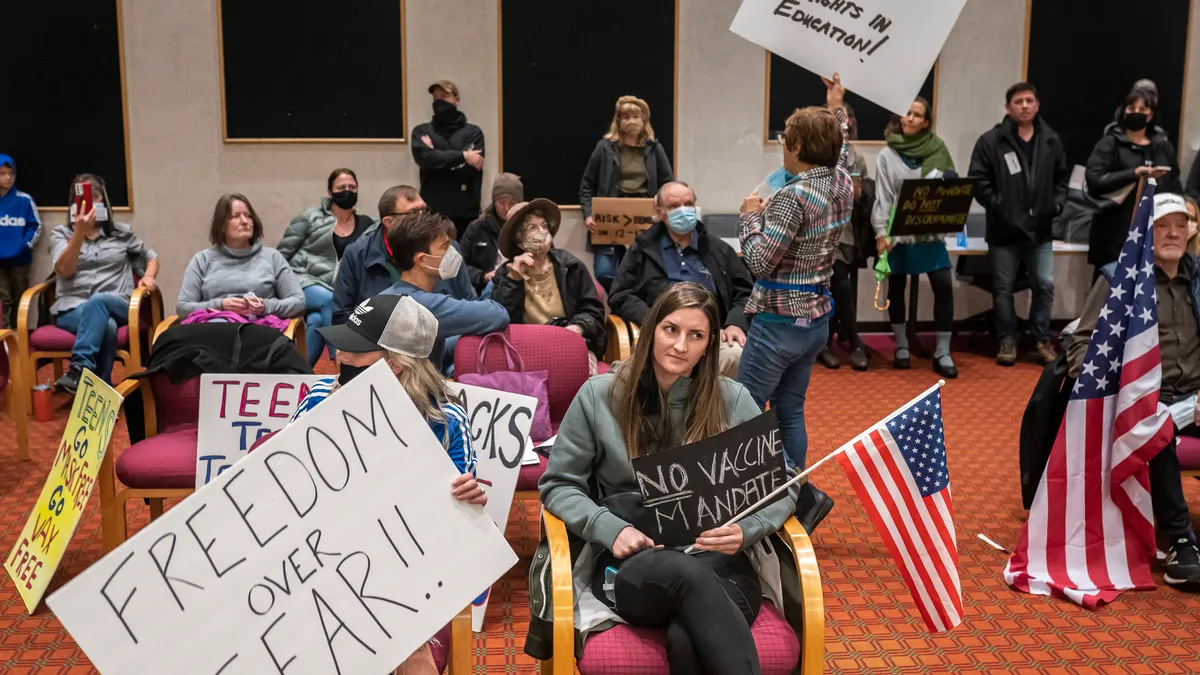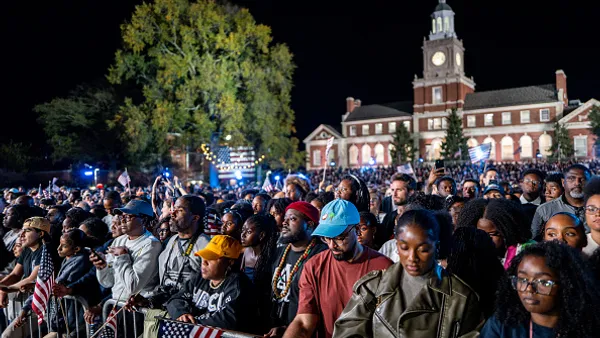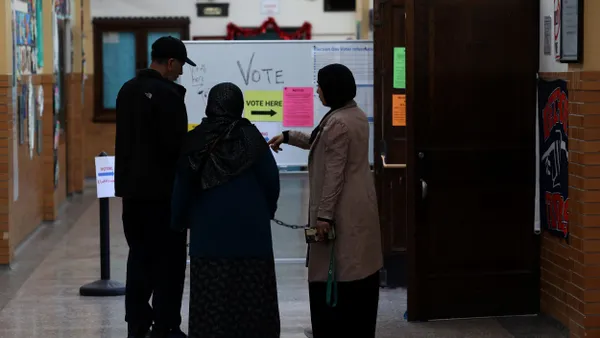Between emergency phone calls about rising COVID-19 variant cases and discussions of underwhelming vaccination rates in some areas, governors, former secretaries of education, state commissioners of education and representatives gathered at the Ronald Reagan Institute in Washington, D.C., to discuss how to turn the coronavirus pandemic into an opportunity for innovation within the education profession.
“I have seen that through the pandemic, there was an awareness," said Delaware Lt. Gov. Bethany Hall-Long at the Thursday event. "Seeing things not as a loss or adversity, but picturing our opportunities."
But while the COVID-19 pandemic triggered a rapid change in areas like technology and community schools, it also highlighted issues in K-12 that have been slow to progress.
“I think the country was on a very good path at keeping our pursuit of a more perfect union in focus,” said U.S. Rep. James Clyburn, a Democrat from South Carolina who has served as House majority whip since 2019. “And then this pandemic happened, and people then begin to see that there is something we weren’t paying attention to that the pandemic revealed — and it was there in education.”
Politics and a lack of bipartisanship, as well as an ineffective distribution of resources, have often gotten in the way of improving school infrastructure and providing universal broadband access, speakers at the summit said.
“I wish we would spend half the time studying the cost of not doing something, as we spend talking over how much it costs to do it,” said Clyburn, who noted the state still has schools without plumbing in some places. “It’s time for us to take a hard look at how we supplement each other rather than learn about whose jurisdiction starts where and who it starts with.”
Arne Duncan, a former U.S. secretary of education under President Barack Obama, said federal, state and local agencies should “stop fighting" and "help each other."
“As a country, we fight over small strategies. We don’t have big goals,” Duncan said. “That would be an opportunity to accelerate the rates of change going forward.”
And while sufficient education funding and political consensus can be hard to come by, distributing existing resources effectively can be just as challenging. “It’s not just about throwing money,” Hall-Long said. “It’s about redistributing resources.”
Phil Bryant, a Republican former governor of Mississippi who served in the position until 2020, pointed to the prison system as an example of potentially mismanaged funds that could be redirected to schools. Under Bryant's leadership, the state saved $40 million through criminal justice reform in the first three years of the effort.
“There are people who need to be in jail, and then there are people we're just mad at. So maybe the people we’re mad at, they don't need to be in jail,” Bryant said. “There are ways we can do things smarter, and we can put that money in the classroom — if you have the will.”
Partnerships can be a way to work smarter, especially when it comes to broadband, which can benefit from collaboration between federal and state governments, the private sector and schools, attendees said. But a lack of competition in the market is making broadband for underserved communities even more inaccessible.
More than 50% of Americans only have one or fewer choices of high-speed broadband, according to Mike Katz, executive vice president of T-Mobile for Business. "It's a highly un-competitive market that results in many people not having access, and those who do have access end up paying much more than they should."
Kim Hunter Reed, Louisiana’s commissioner of higher education, pointed to her state as an example of smart collaboration. As a result of cooperation between the workforce, higher education institutions and high schools, Louisiana piloted a program in every region of the state for high schoolers to graduate with an associate degree.
“You have to reward early adopters. You have to bring partners together,” she said. “We can’t just do it the same way and expect different results.”



